COMP306 #13 Tree Based Indexing
1/21
There's no tags or description
Looks like no tags are added yet.
Name | Mastery | Learn | Test | Matching | Spaced |
|---|
No study sessions yet.
22 Terms
example ISAM Tree
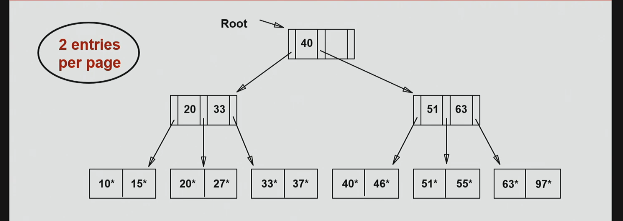
structure of leag pages
only store data entries
structure of non-leaf pages:
pointers and keys.

non-leaf pages are
static
two types of leaf pages
primary pages and overflow pages
non-leaf pages act as
guides
leaf pages store
actual data entires
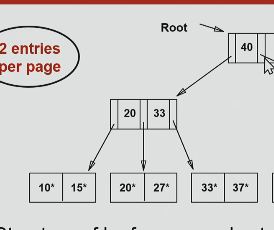
40 pointer meaning here
everything will be less than 40.
insertion into an isam tree
find where 23 belongs, start at the node, then 23 is between 20 and 33, then follow that pointer, but guess what the page is full, so create an overflow page,
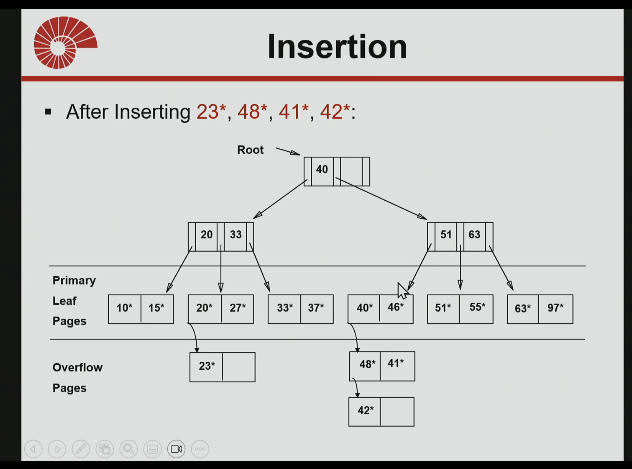
deletion example
find 42 in the tree, delete it
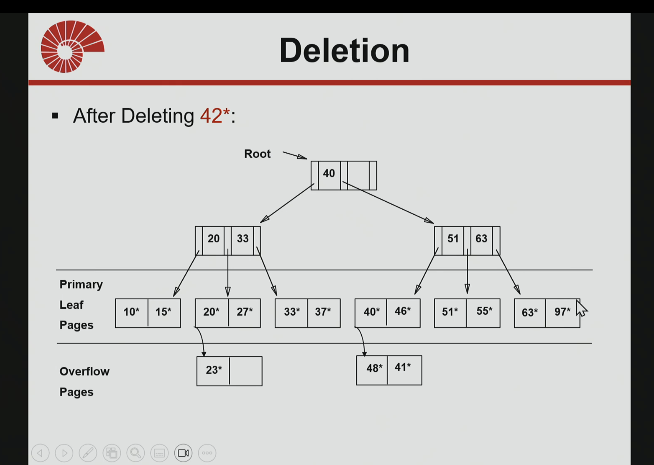
why isam tree a static data strucutre?
because non-leaf pages don’t change (leaf pages and overflow pages might change).
what is the problem with static isam trees
the complexity is dependent on the insertion deletion order, initally it can be quite balanced but later on it might get shitty. long overflow chains (straight up linked list mate)
best case worst case complexities in an ISAM tree
O(logN), N.
B+ tree
self-balancing tree data strucutre that keeps data sorted and allows search sequential access, insertion and deletion in O(logN) time. commonly used in today’s DBMS
properties of B+ trees
perfectly height balanced at all timese
every node other than the root must be atleast half full
order = m means nodes have at most m children (thus each node holds at most m-1 data entrires)
example b+ tree

notice that there are pointers between leaf nodes.
the benefit of having pointers between leaf nodes
sequential thing:
i.e. we want to look at 24 first, then we scan to the right.
insertion in B+ trees
find the leaf node L to insert to
if L has enogh space: insert into L, ensure the leaf is sorted done! (since we can serach in the leaf nodes thats why they should be sorted.)
otherwise:
must split L into two nodes
redistribute entries evenly, copy up the middle key. this split may cause recurisve splits in the upper levels
to handle splits in the upper levels: redistribute entries evenly, push up the middle key
always check if the push up causes further splits.
inserting 8 into this tree

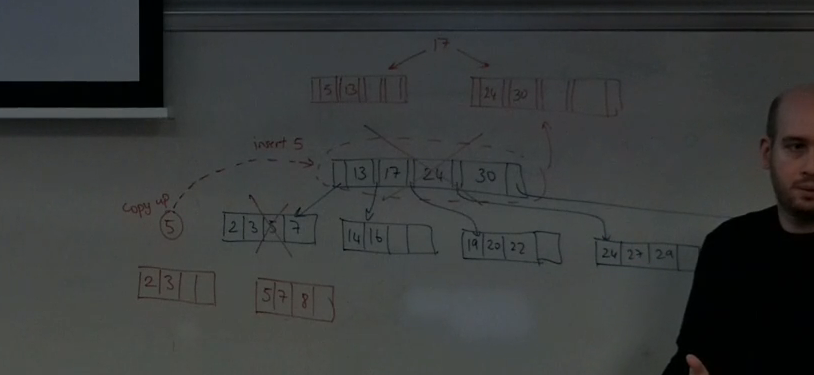
don’t forget the importance of pushing up vs copying up.
deletion in a B+ tree
start at the root, find leaf L where entry resides.
remove the entry from L
after remove if L is at least half full, done!
otherwise, try to redistribute by borrwon from L’s right sibling adjacent node with same parent as L
if re-distribution fails, merge L and its sibling
if merge occurs, we must delete the entry seperating L and its sibling from L’s parent
merge could propogate all the way up to the root and cause decreased tree height.
deletion example
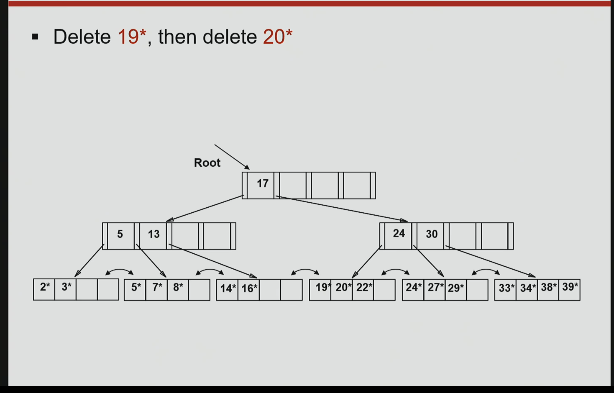

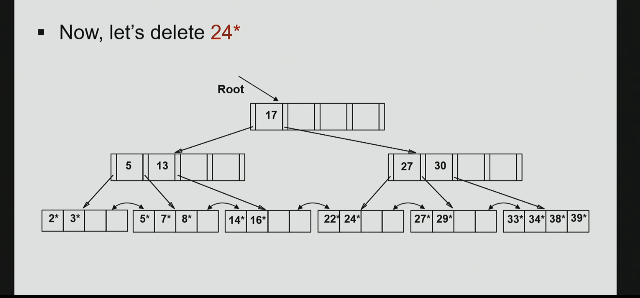
should merge these cunts now.
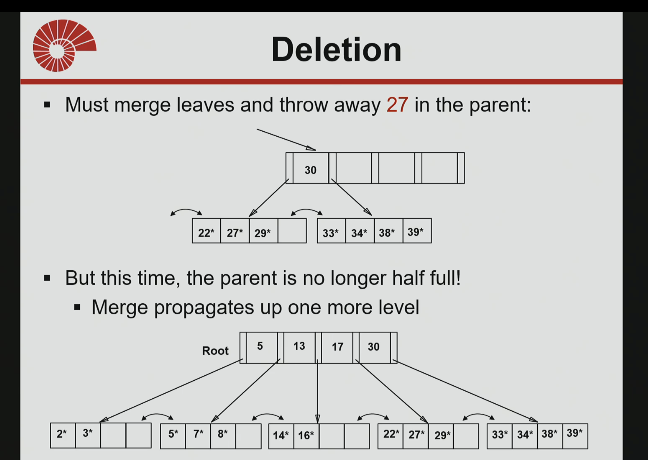
bulk loading
if we have a large collection of records and we want to create a B+ tree with them, doing so by repeatedly inserting records in random order can be slow
can be solved by bulk loading of the B+ tree
sort all records, initalize empty root and start adding.

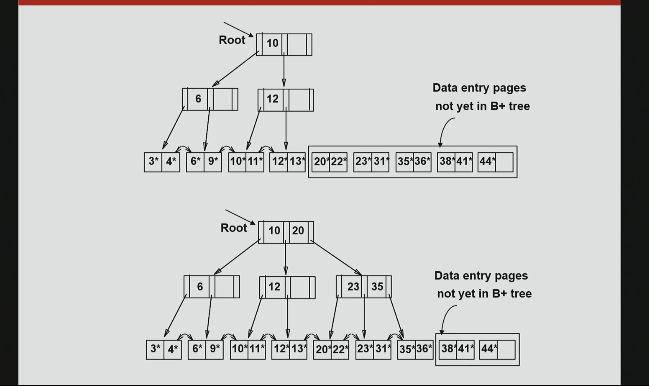
why: the left part of the B+ tree is not changing whatsoever (,ajority of the tree never changes).